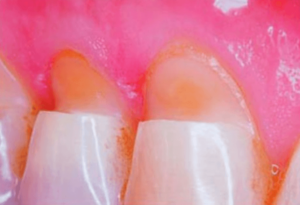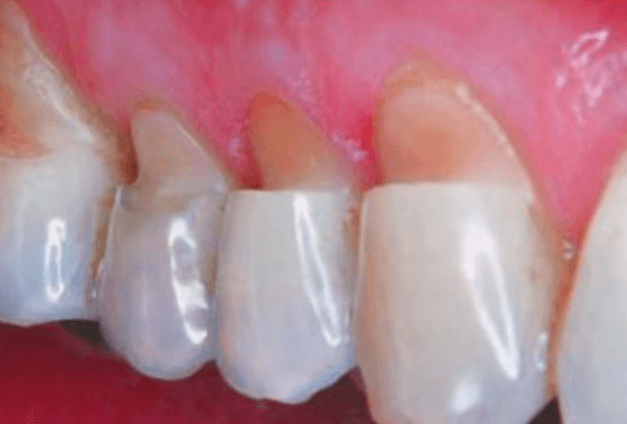What is dental abfraction
Dental abfraction is a type of non-carious lesion in the teeth, characterized by the loss of tooth structure in the cervical area (near the gingiva), unrelated to caries or traumatic fractures. It is believed to occur due to excessive biomechanical forces that generate stress on the enamel and dentin.
Causes of dental abfractions
- Excessive occlusal forces:
- Bruxism or dental clenching: Repetitive pressure on the teeth generates microfractures in the cervical enamel.
- Malocclusion: A bad alignment can cause overload in certain areas of the tooth.
- Tooth bending:
- During chewing, the teeth experience compressive and tensile forces. In some cases, this weakens the enamel structure in the cervical area.
- Contributing factors:
- Aggressive brushing and use of abrasive pastes.
- Parafunctional habits (biting pencils, nails, etc.).
- Chemical factors such as acidic diets or gastroesophageal reflux, which weaken the enamel.
Symptoms of dental abfraction
- Wedge-shaped lesion in the cervical area of the tooth.
- Dental sensitivity, especially with cold or acidic foods.
- Increased wear over time.
Treatment of dental abfraction
- Correction of occlusal habits and forces:
- Use of unloading splint in case of bruxism.
- Occlusal adjustment if there is severe malocclusion.
- Dental restorations:
- Composite resins to fill the lesion and protect the exposed dentin.
- Glass ionomers in cases of high sensitivity.
- Education and prevention:
- Use of soft bristle brushes and correct brushing technique.
- Avoid abrasive pastes and acid rinses.
Difference between dental erosion and dental abfraction
Although both cause loss of tooth structure, abfraction and erosion have different origins and manifest themselves differently.
|
Dental Abfraction |
Dental Erosion |
|
|
Cause |
Mechanical factors. It is caused by excessive occlusal forces, such as bruxism (teeth grinding) or malocclusion, which generate stress in the cervical area of the tooth. |
Chemical factors. Loss of enamel and dentin due to exposure to non-bacterial acids. |
|
Appearance |
Wedge-shaped or V-shaped lesions in the cervical area (near the gum), usually deep and well demarcated. |
Smooth, shiny and flattened tooth surface. In advanced cases, yellowish dentin is exposed. |
|
Location |
Especially in anterior teeth and premolars, where the bending forces are higher. |
Frequent on palatal/lingual surfaces of upper teeth (due to reflux) and vestibular surfaces (due to dietary acids). |
|
Symptoms |
Dental sensitivity, especially with thermal changes (hot/cold) and pressure. |
Frequent on palatal/lingual surfaces of upper teeth (due to reflux) and vestibular surfaces (due to dietary acids). |

Bibliography: Cuniberti de Rossi, Lesiones Cervicales no Cariosas – La lesión dental del futuro. Editorial medica panamericana.



